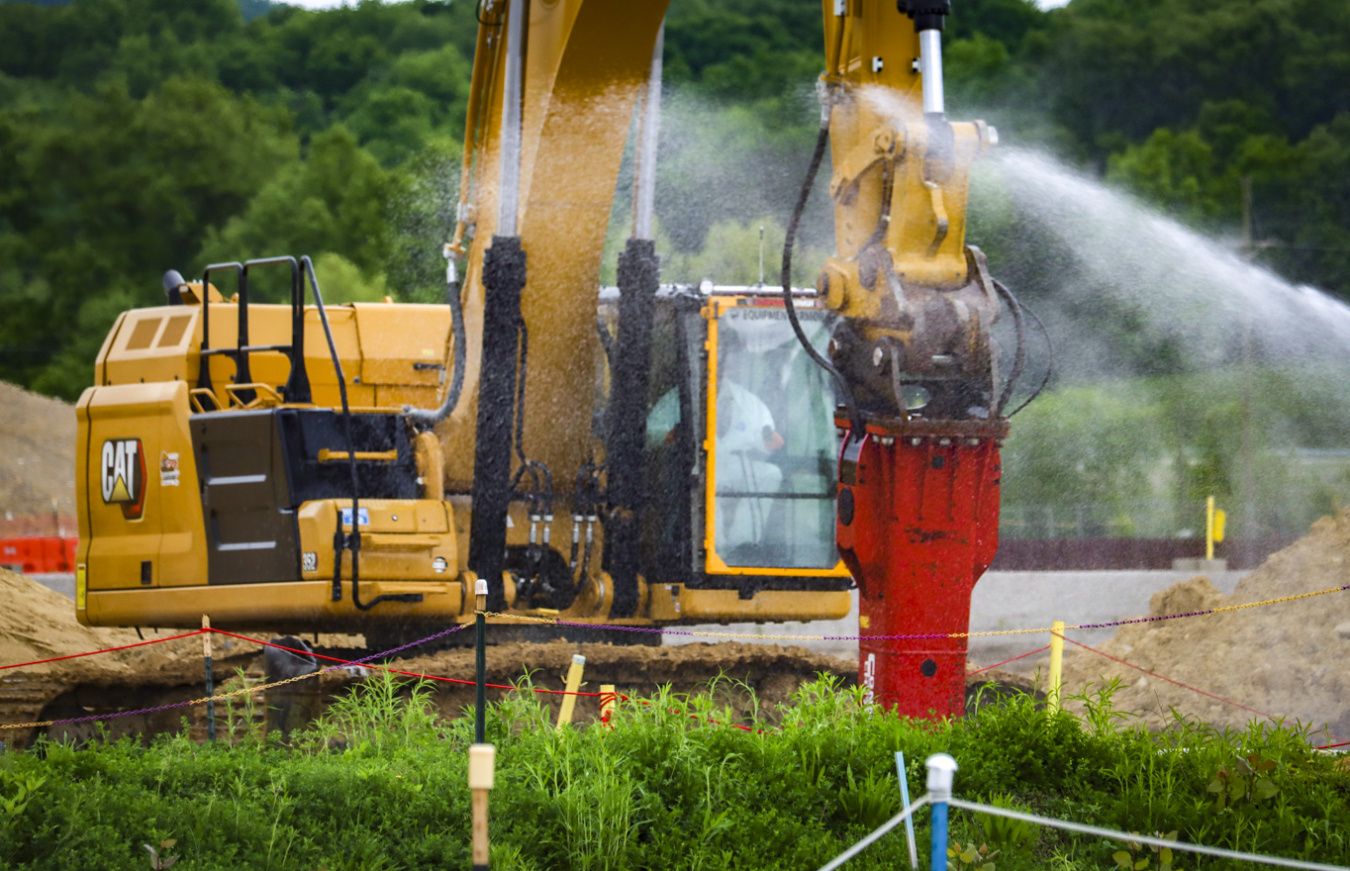Crews at the Portsmouth Site have kicked off another phase of excavating a legacy groundwater plume at the site. July 8, 2025
Office of Environmental Management
July 8, 2025Crews excavate soil in the 5-Unit Area Plume at the Portsmouth Site. In this sixth of 13 phases of the project, they will excavate about 170,000 cubic yards of soil for use at the On-Site Waste Disposal Facility for the placement of debris from the X-333 Process Building currently being demolished at the site.
PIKETON, Ohio — Crews at the Portsmouth Site have kicked off another phase of excavating a legacy groundwater plume at the Portsmouth Site to provide a substantial source of impacted soil for use at the On-Site Waste Disposal Facility (OSWDF) for the disposal of debris from the X-333 Process Building demolition.
This is the sixth of 13 phases for the 5-Unit Plume Area Excavation Project, which will ultimately provide more contiguous land for future use of the site. In the sixth phase, crews are set to excavate approximately 170,000 cubic yards of impacted soil for use at the 5 million-cubic-yard OSWDF for the placement of debris from X-333, the second of three former uranium enrichment process buildings currently being demolished at the site.
All remaining phases of the excavation project are expected to provide about 350,000 cubic yards of soil for use as fill at the OSWDF, which equates to about 29,000 dump truck loads of soil.
“Landfill and plume excavation is a key part of our integrated project strategy at the site.” Portsmouth Site Lead Jeremy Davis said. “By carefully planning our excavation activities, we are prepared to safely and responsibly support the pace of building demolition and OSWDF operations.”
Workers unload a bundle of transite panels from the X-333 Process Building at a ramp at the On-Site Waste Disposal Facility. Soil from the 5-Unit Area Plume will be used as engineered fill to provide stability to materials like the transite panels being placed in the disposal facility.
Portsmouth Site officials have said that using soil from legacy groundwater plumes and old landfills onsite avoids the cost of buying clean fill for OSWDF, expedites environmental cleanup of the site and provides more land for future reuse.
The pace set for the excavation of soil from the groundwater plume is driven by multiple factors, including the need for soil at OSWDF, progress on the X-333 demolition and the amount of debris generated during the demolition. The demolition activities increase the need for impacted soil, which in turn advances environmental cleanup as crews use the soil from the plume at OSWDF.
“We are working to clean up an area that was once impacted by trichloroethylene, a chemical used to clean equipment, and in the process, produce enough engineered fill for use in the OSWDF,” Fluor-BWXT Portsmouth (FBP) Environmental Remediation and Environmental Protection Director Jyh-Dong Chiou said. “Initiating this phase of the project is integral to providing sufficient amounts of engineered fill to be used in the OSWDF to start placement of X-333 Process Building demolition debris.”
Operator Brent Groves uses heavy equipment to break through concrete of the former X-326 Process Building. Workers removed the southwestern portion of the foundation to reach the outer edge of the 5-Unit Area Plume to excavate soil for use at the On-Site Waste Disposal Facility. Water is sprayed onto the work area for dust suppression.
Crews with FBP, the deactivation and demolition contractor for the Portsmouth Site, initiated the sixth phase with the demolition and excavation of a portion of the concrete foundation from the X-326 Process Building, the first process building demolished at the Portsmouth Site. Workers removed the southwestern portion of the foundation to reach the plume's outer edge.
Overall, the plume is about 33 acres, resulting from a number of sources of groundwater contamination. All 13 phases of excavation of impacted soils from the plume are scheduled to be complete in 2027.
To date, workers have transported approximately 60,000 truckloads of soil and debris from the plume area to OSWDF, traveling nearly 20,000 miles to transport the dirt and debris.
The Portsmouth Paducah Project Office conducts cleanup activities at the Portsmouth Site in accordance with a consent decree with the state of Ohio and director’s final findings and orders with the Ohio Environmental Protection Agency.
-Contributor: Michelle Teeters
To receive the latest news and updates about the Office of Environmental Management, submit your e-mail address.


